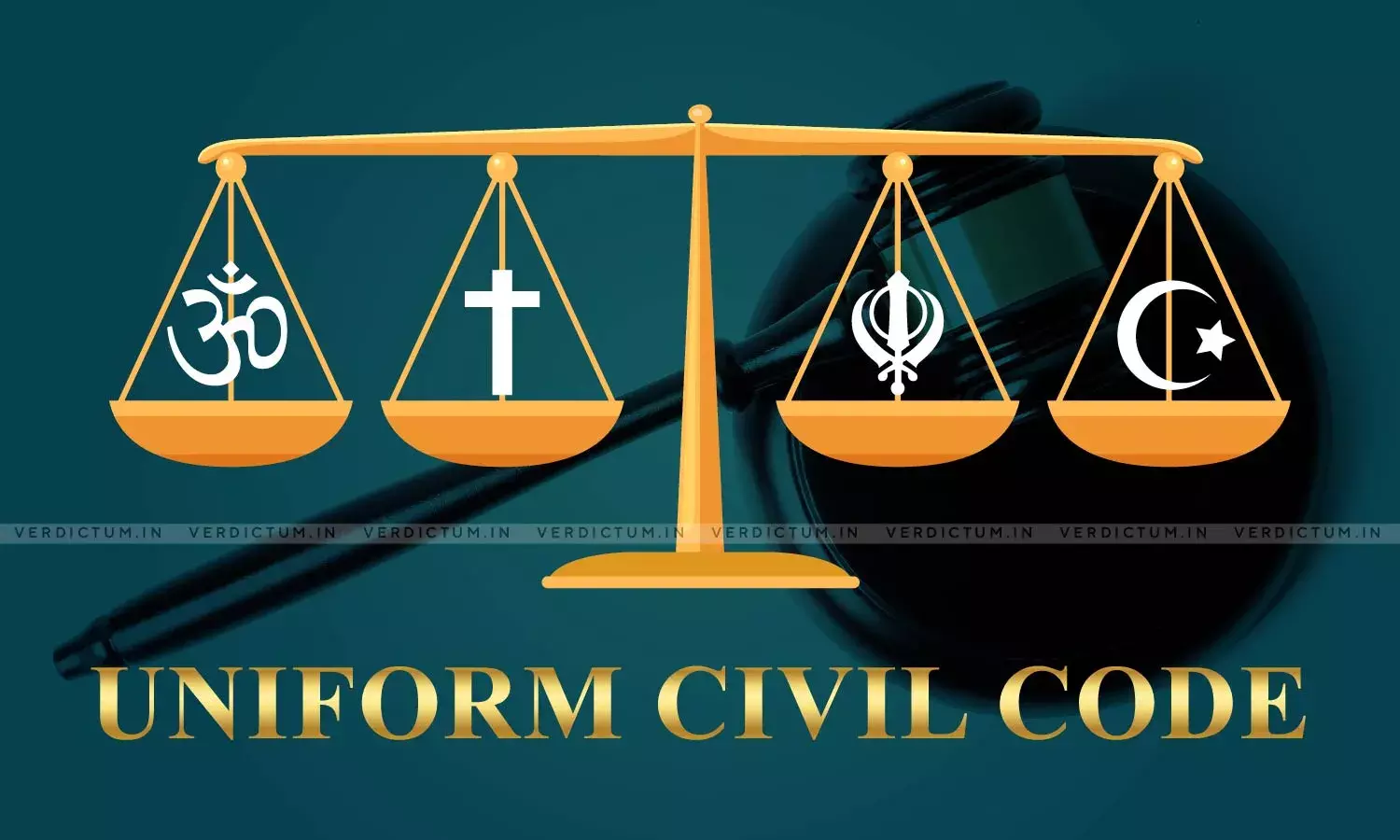Column| Uniform Civil Code - A Reality in India
Empowerment of all citizens and gender justice are among the statement of objects and reasons behind the Uniform Civil Code in India. The desirability of the Uniform Civil Code can hardly be doubted. It can concretize only when social climate is built up by the elite of the society and statesmen amongst leaders, who can awaken the masses to accept change.
The Narendra Modi Government has always demanded such debate and inclusion of the stakeholders and beneficiaries in the decision-making process. The Uniform Civil Code once enacted will be more of a secular and beneficial legislation. The ‘personal law’ affects, not merely the minorities but also the majority. All persons must have trust on a democratic rule, which will have regard to the religious tenets and beliefs of all people. The Laws are fully and consistently enforced to provide adequate protection for members of religious minorities in India. All communities must be willing to adapt itself to the changing times in the Country. I quote, “The law of a society is a living organism. It is based on a given factual and social reality that is constantly changing. Sometimes change in law precedes societal change and is even intended to stimulate it. In most cases, however, a change in law is the result of a change in social reality. Indeed, when social reality changes, the law must change too” AK Sikri, J in Badshah v. Urmila Badshah Godse, (2014) 1 SCC 188.
Reforms to ‘personal law’ in India, with reference to socially unacceptable practices in different religions, have come about only by way of legislative intervention. Such legislative intervention is permissible under Articles 25(2) and 44, read with entry 5 of the Concurrent List, contained in the Seventh Schedule of the Constitution.
The Uniform Civil Code, if implemented, will override all personal laws with a common set of Rules governing every citizen. The concept of a Uniform Civil Code is enshrined in Part IV of the constitution, which deals with the Directive Principles of the State Policy under Article 44. Article 44 states that “The State shall endeavour to secure for the Citizens a Uniform Civil Code throughout the territory of India”. The Beneficial Legislation such as the Uniform Civil Code will have a larger public interest and welfare ambitions. Diversity is to moulded into uniformity, to remove confusion and uncertainties which arises from conflict of statutes and Judicial decisions. Each of us will keep our own distinctive characteristics and will not have to renounce our own historic inheritance.
It is worth noting that religious minorities in India choose to maintain their cultural or religious identities, and intentionally resist any attempts to assimilate themselves into mainstream society. Legislations like the Uniform Civil Code tends to focus on empowering the minorities by cultivating confidence and capacity.
Based on the Constituent Assembly debates with reference to draft Article 35, which was incorporated in the Constitution as Article 44 and as expressed in Article 25(2)(b), so also the debates of Article 44, the intent of the Constituent Assembly was to protect personal laws’ of different communities by elevating their stature to that of other fundamental rights, however with the rider, that the legislature was competent to amend the same. Article 25(2)(b) vested the power with the legislature, to interfere with ‘personal law’ on the ground of social welfare and reform. Our Country believes that inclusive and equitable development is the key to securing a life of dignity, security, empowerment and freedom for all. Social integration or social inclusion does not mean a uniformity of people but a society which has room for diversity and still fosters engagement. The Uniform Civil Code may enable our society to move away from labelling, categorizing and classifying people, towards more inclusive policies.
The Constituent Assembly debates, with reference to Article 25 (-draft Article19) reveal that the members of the Constituent Assembly understood a clear distinction between ‘personal law’ and the ‘civil code’.‘Personal law’ was understood as based on the practices of members of communities. It was to be limited to the community itself, and would not affect members of other communities. The ‘civil code’ on the other hand, had an unlimited reach. The ‘civil code’ was understood to apply to every citizen of the land. The debates in the Constituent Assembly with reference to Article 25, leave no room for any doubt, that the framers of the Constitution were firm in making ‘personal law’ a part of the fundamental rights, with the liberty to the State to provide for social reform.
The Supreme Court in the year of 1985 suggested the Indian Parliament to frame Uniform Civil Code in the case of Shah Bano. The then Chief Justice of India Y.V. Chandrachud observed that “A common Civil Code will help the cause of National Integration by removing disparate loyalties to law which have conflicting ideologies”. In fact, the framers of the constitution were aware that personal laws needed to be reformed in many material particulars and in fact they wanted to abolish these different personal laws and to evolve one common code.
It is a settled proposition that progressive and beneficial legislation must be interpreted in favour of the beneficiaries when it is possible to take two views of a legal provision. The law should be interpreted in terms of the changing needs of the times and circumstances. The Uniform Civil Code definitely touches upon the matrix of Religion; however, the main objective, reason and intent is clear; to empower all citizens of India. All provisions of the constitution must be harmoniously construed so that there remains no conflict between them whilst drafting the Uniform Civil Code. It would be pertinent to mention, that the constitutional protection to tenets of ‘personal law’ cannot be interfered with, as long as the same do not infringe ‘public order, morality and health’, and/or the ‘provisions of Part III of the Constitution’. This is a clear position expressed in Article 25 (1). The right to dignity encapsulates the right of every individual to be treated as a self-governing entity having intrinsic value. It means that every human being possesses dignity merely by being a human, and can make self-defining and self-determining choices. Dignity has been recognized as a core component of the right to life and liberty under Article 21.
I quote, “Provisions of a beneficial legislation have to be construed with a purpose-oriented approach. The Act should receive a liberal construction to promote its objects. Also, literal construction of the provisions of a beneficial legislation has to be avoided”, Nageshwar Rao, J in KH Nazar v. Mathew K Jacob, (2020) 14 SCC 126.
To conclude, in my considered View, I feel that the Uniform Civil Code once enacted will be a Secular and beneficial Legislation. It must be embraced by all the communities. The Uniform Civil Code will bridge the gap between law and society. The Uniform Civil Code must be self-speaking, so as not to frustrate the very objective of the Statute. Just as change in social reality is the law of life, responsiveness to change in social reality is the life of the law.
The Author is an Advocate at the Supreme Court of India and a former Expert on Mission to the UNHCR.
[The opinions expressed in this article are those of the authors. Verdictum does not assume any responsibility or liability for the contents of the article.]












